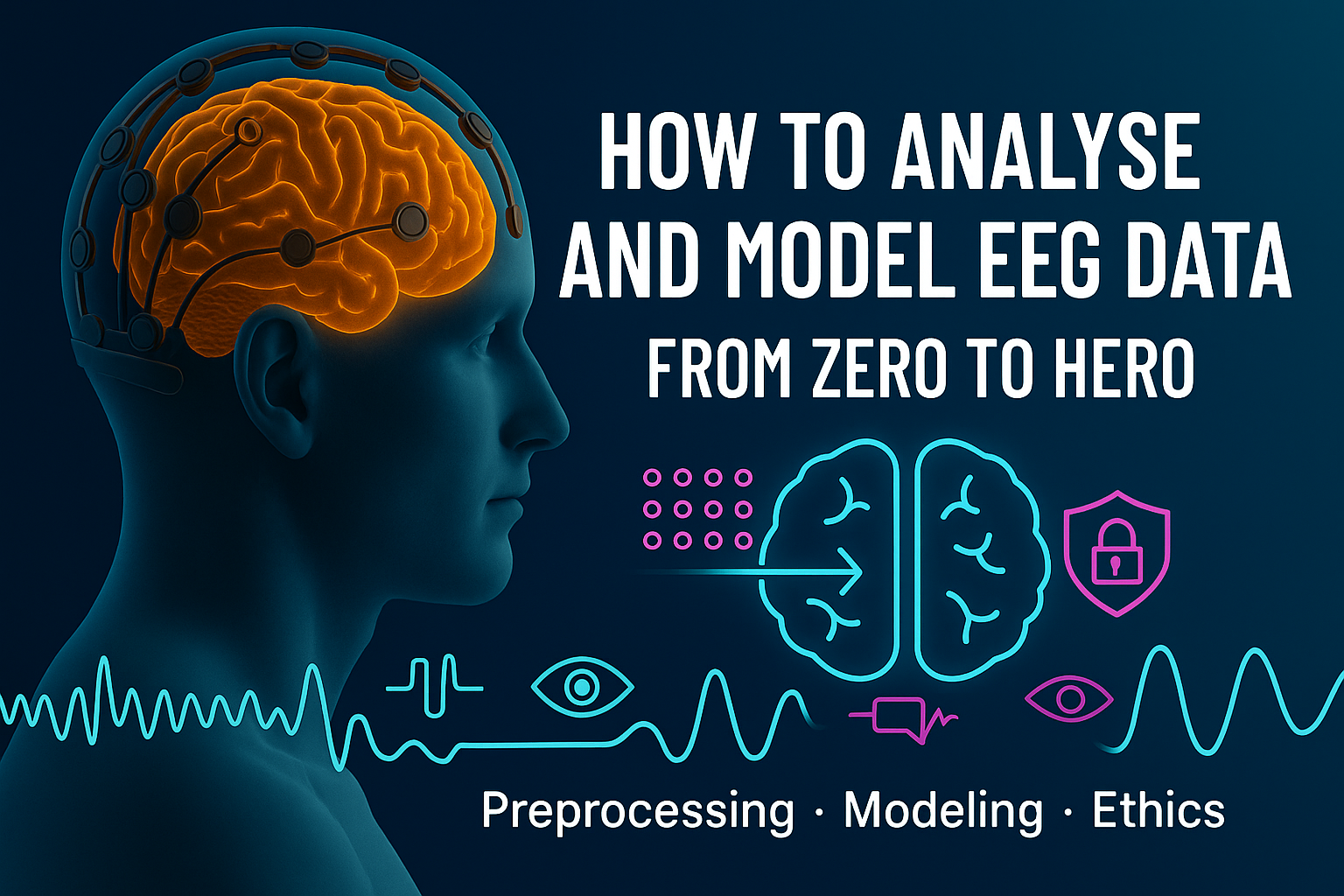
Overview
This course takes you from “what is BCI?” to building simple decoders, using hands‑on Jupyter notebooks. You’ll learn EEG rhythms (alpha/beta), ERPs, and common artifacts (blinks, EMG, powerline); build a repeatable cleaning pipeline with band‑pass and notch filtering, bad‑segment handling, and ICA; engineer features such as band power, ratios, and RMS; and evaluate models with cross‑validation and confusion matrices while reflecting on real‑world BCI limits and ethics. The three guided notebooks anchor the journey: Notebook 1 — Brain and Data loads data in MNE‑Python to visualize raw signals, detect events, and plot ERPs; Notebook 2 — From Noise to Signal applies filters and ICA and quantifies improvement via SNR (dB); Notebook 3 — Decoding Brain Signals windows data, extracts features, and trains LDA and a small NN to compare performance. At the end we explore how BCIs could evolve in the next few years and what the implies for us.
Skills you’ll gain
- EEG visualization & ERPs
- Filtering (band‑pass, notch) and ICA
- SNR evaluation
- Feature engineering (band power, ratios, RMS)
- Model training (LDA & small NN)
- Evaluation (cross‑validation, confusion matrices)
- Reproducible ML workflows
- Neuroethics basics
Tools you’ll learn
- MNE‑Python and Jupyter
- scikit‑learn
- Optional TensorFlow/Keras for simple NNs
- GUI references: EEGLAB and Brainstorm
Course Features
- Lectures 4
- Quiz 0
- Duration Lifetime access
- Skill level All levels
- Language English
- Students 1
- Certificate No
- Assessments Yes
Curriculum
- 1 Section
- 4 Lessons
- Lifetime
- Video Courses SectionModule 1 - Foundations of BCI4

